
Georgia Totto O'Keeffe was an American modernist painter and draftswoman whose career spanned seven decades and whose work remained largely independent of major art movements. Called the "Mother of American modernism", O'Keeffe gained international recognition for her meticulous paintings of natural forms, particularly flowers and desert-inspired landscapes, which were often drawn from and related to places and environments in which she lived.

Precisionism was a modernist art movement that emerged in the United States after World War I. Influenced by Cubism, Purism, and Futurism, Precisionist artists reduced subjects to their essential geometric shapes, eliminated detail, and often used planes of light to create a sense of crisp focus and suggest the sleekness and sheen of machine forms. At the height of its popularity during the 1920s and early 1930s, Precisionism celebrated the new American landscape of skyscrapers, bridges, and factories in a form that has also been called "Cubist-Realism." The term "Precisionism" was first coined in the mid-1920s, possibly by Museum of Modern Art director Alfred H. Barr although according to Amy Dempsey the term "Precisionism" was coined by Charles Sheeler. Painters working in this style were also known as the "Immaculates", which was the more commonly used term at the time. The stiffness of both art-historical labels suggests the difficulties contemporary critics had in attempting to characterize these artists.

Kemper Museum of Contemporary Art opened in 1994 in Kansas City, Missouri. With a $5 million annual budget and approximately 75,000 visitors each year, it is Missouri's first and largest contemporary museum.
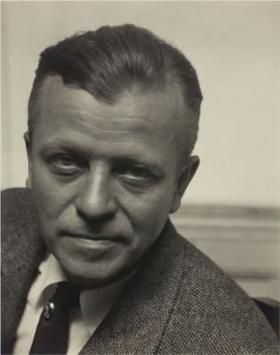
Arthur Garfield Dove was an American artist. An early American modernist, he is often considered the first American abstract painter. Dove used a wide range of media, sometimes in unconventional combinations, to produce his abstractions and his abstract landscapes. Me and the Moon from 1937 is a good example of an Arthur Dove abstract landscape and has been referred to as one of the culminating works of his career. Dove made a series of experimental collages in the 1920s. He also experimented with techniques, combining paints like hand mixed oil or tempera over a wax emulsion as exemplified in Dove's 1938 painting Tanks, in the collection of the Boston Museum of Fine Arts.

Nancy Graves was an American sculptor, painter, printmaker, and sometime filmmaker known for her focus on natural phenomena like camels or maps of the Moon. Her works are included in many public collections, including those of the National Gallery of Art, the Brooklyn Museum of Art, the Smithsonian American Art Museum, the National Gallery of Australia (Canberra), the Des Moines Art Center, Walker Art Center (Minneapolis), and the Museum of Fine Arts. When Graves was just 29, she was given a solo exhibition at the Whitney Museum of American Art. At the time she was the youngest artist, and fifth woman to achieve this honor.
Barbara Buhler Lynes is an art historian, curator, professor, and preeminent scholar on the art and life of Georgia O'Keeffe. She retired on February 14, 2020 from her position as the Sunny Kaufman Senior Curator at the NSU Museum of Art in Fort Lauderdale, Florida to continue her scholarly work on O'Keeffe and American modernism. From 1999 to 2012, she served as the founding curator of the Georgia O'Keeffe Museum in Santa Fe, New Mexico, where she curated or oversaw more than thirty exhibitions of works by O'Keeffe and her contemporaries. Lynes was also the Founding Emily Fisher Landau Director of the Georgia O'Keeffe Museum Research Center from 2001 to 2012. Prior to her work at the Georgia O'Keeffe Museum, Lynes served as an independent consultant to the National Gallery of Art in Washington, D.C. from 1992 to 1999 and has taught art history at Vanderbilt University, Dartmouth College, Montgomery College, and the Maryland Institute College of Art (MICA).

The Georgia O'Keeffe Museum is dedicated to the artistic legacy of Georgia O'Keeffe, her life, American modernism, and public engagement. It opened on July 17, 1997, eleven years after the artist's death. It comprises multiple sites in two locations: Santa Fe, New Mexico, and Abiquiu, New Mexico. In addition to the founding Georgia O'Keeffe Museum in Santa Fe, the O'Keeffe includes: the Library and Archive within its research center at the historic A.M. Bergere house; the Education Annex for youth and public programming; Georgia O'Keeffe's historic Abiquiu Home and Studio; the O'Keeffe Welcome Center in Abiquiu; and Museum Stores in both Santa Fe and Abiquiu. Georgia O'Keeffe's additional home at the Ghost Ranch property is also part of the O'Keeffe Museum's assets, but is not open to the public.
Mary Frank is an English visual artist who works as a sculptor, painter, printmaker, draftswoman, and illustrator.
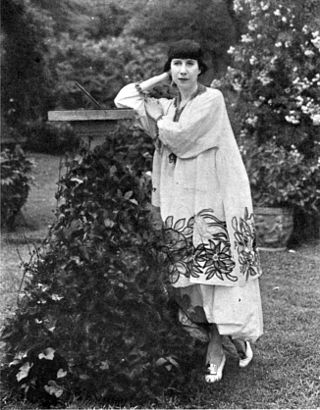
Florine Stettheimer was an American modernist painter, feminist, theatrical designer, poet, and salonnière.
Henrietta Mary Shore was a Canadian-born artist who was a pioneer of modernism. She lived a large part of her life in the United States, most notably California.
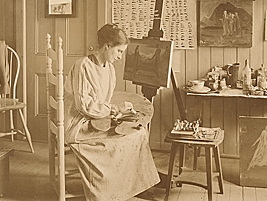
Agnes Lawrence Pelton was a modernist painter who was born in Germany and moved to the United States as a child. She studied art in the United States and Europe. She made portraits of Pueblo Native Americans, desert landscapes and still lifes. Pelton's work evolved through at least three distinct themes: her early "Imaginative Paintings," art of the American Southwest people and landscape, and abstract art that reflected her spiritual beliefs. She was a first cousin of American sculptor Laura Gardin Fraser.
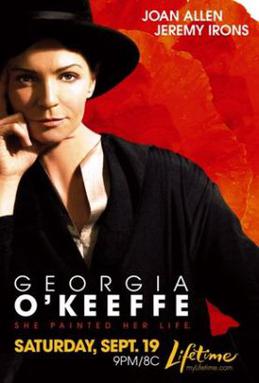
Georgia O'Keeffe is a 2009 American television biographical drama film, produced by City Entertainment in association with Sony Television, about noted American painter Georgia O'Keeffe and her husband, photographer Alfred Stieglitz. The film was directed by Bob Balaban, executive-produced by Joshua D. Maurer, Alixandre Witlin and Joan Allen, and line-produced by Tony Mark. Shown on Lifetime Television, it starred Joan Allen and Jeremy Irons in lead roles.
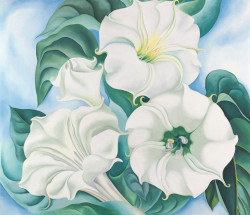
Jimson Weed is an oil on linen painting by American artist Georgia O'Keeffe from 1936, located in the Indianapolis Museum of Art in Indianapolis, Indiana. It depicts four large blossoms of jimson weed. A similar work by O'Keeffe, Jimson Weed/White Flower No. 1, was sold by the Georgia O'Keeffe Museum at auction to Walmart heiress Alice Walton in 2014 for $44,405,000, more than tripling the previous world record auction for a piece by a female artist.

Oriental Poppies, also called Red Poppies, is a 1927 oil-on-canvas painting by Georgia O'Keeffe. It is a close-up of two Papaver orientale flowers that fill the entire canvas.

Georgia O'Keeffe made a number of Red Canna paintings of the canna lily plant, first in watercolor, such as a red canna flower bouquet painted in 1915, but primarily abstract paintings of close-up images in oil. O'Keeffe said that she made the paintings to reflect the way she herself saw flowers, although others have called her depictions erotic, and compared them to female genitalia. O'Keeffe said they had misconstrued her intentions for doing her flower paintings: "Well – I made you take time to look at what I saw and when you took time to really notice my flower you hung all your own associations with flowers on my flower and you write about my flower as if I think and see what you think and see of the flower – and I don't."

Blue is the name of four paintings that Georgia O'Keeffe made in 1916. It was one of the sets of watercolors that she made exploring a monochromatic palette with designs that were non-representational of specific objects. The paintings were made on 15+7⁄8-by-11-inch sheets of Japanese tissue of the gampi tree.

Georgia O'Keeffe made a set of paintings of Palo Duro Canyon while working as a department head and art instructor at West Texas State Normal College. The vibrant paintings reflect her development as an Abstract Expressionist, influenced by Arthur Wesley Dow.

The American artist Georgia O'Keeffe is best known for her close-up, or large-scale flower paintings, which she painted from the mid-1920s through the 1950s. She made about 200 paintings of flowers of the more than 2,000 paintings that she made over her career. One of her paintings, Jimson Weed, sold for $44.4 million, making it the most expensive painting sold of a female artist's work as of 2014.

Maria Chabot (1913–2001), was an advocate for Native American arts, a rancher, and a friend of Georgia O'Keeffe. She led the restoration of her house in Abiquiú, New Mexico, and took the photograph of O'Keeffe entitled Women Who Rode Away, in which the artist was on the back of a motorcycle driven by Maurice Grosser. Their correspondence was published in the book Maria Chabot—Georgia O'Keeffe: Correspondence 1941-1949.

Sky Above Clouds (1960–1977) is a series of eleven cloudscape paintings by the American modernist painter Georgia O'Keeffe, produced during her late period. The series of paintings is inspired by O'Keeffe's views from her airplane window during her frequent air travel in the 1950s and early 1960s when she flew around the world. The series begins in 1960 with Sky Above the Flat White Cloud II, the start of a minimalist cycle of six works, with O'Keeffe trying to replicate the view of a solid white cloud she saw while flying back to New Mexico. She would continue to work on this singular motif in Sky with Flat White Cloud, Clouds 5/ Yellow Horizon and Clouds, Sky with Moon, and Sky Above Clouds / Yellow Horizon and Clouds. A darker variation of this motif occurred in 1972, influenced by her battle with macular degeneration, resulting in The Beyond, her last, unassisted painting before losing her eyesight.

















